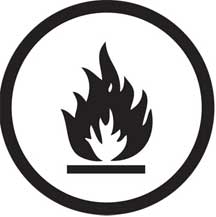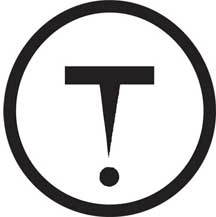| | Health effects | Fire | Leaks and spills
Storing and handling fuel on the farm can pose many risks to personal safety, property damage, and environmental contamination. A few risks addressed in this publication include health effects, fire, and leaks and spills.
Health Effects
Exposure to diesel or gasoline can occur through breathing vapours, swallowing fuel or skin contact.
Possible health effects include:
- Skin irritation, dermatitis
- Chemical burns due to prolonged contact
- Eye and respiratory passage irritation
- Headaches, dizziness, nausea, and central nervous system depression
- Possible cause of cancer
Preventative measures include:
- Perform all fuel transfers outdoors to prevent fumes from building up and creating a dangerous explosive environment
- Vent exhaust outside when operating motors inside a building
- Avoid breathing fuel or exhaust fumes
- Wear neoprene gloves, not leather or cloth, when transferring fuel
- Thoroughly wash hands, clothing, etc. after exposure or contact with fuel
- Ensure all tanks, etc are properly labeled so that users are aware of the potential hazards associated with the product (see WHMIS below)
The Workplace Hazardous Material Information System (WHMIS) is a comprehensive plan for providing information on the safe use of hazardous materials. Labels will inform anyone drawing fuel from the tank to take the appropriate precautions. As well, Material Safety Data Sheets (MSDS) are documents that contain information on the potential hazards and how to work safely with the chemical product. MSDS for gasoline and diesel can be obtained from the supplier.
 |  |
Class B2 – Flammable (gasoline)
Class B3 – Combustible (diesel) | Class D2A – Carcinogenicity (gasoline)
Class D2B – Other Toxic Effects – Skin Irritant (diesel) |
Figure 3: WHMIS symbols for diesel fuel and gasoline
Fire
As dangerous and destructive as fuel is in a liquid state, it’s even more dangerous as a vapour.
The lower explosive limit (LEL) of gasoline is 1.4% so, under certain conditions, vapours may explode spreading fire over a large area.
Possible sources of ignition may include:
- Electric motors
- Yard lights
- Power lines
- Electric fences
- Air conditioning or heating units
- Garbage burning barrels
- Vehicles (i.e. overflow of fuel onto hot exhaust, engine, etc.)
- Smoking
- Glass debris (can refract sunlight and ignite dry grass)
- Electrical appliances
- Ignitions for gas appliances (heaters, furnaces, etc.)
- Cell phones
- Static electricity (produced by the movement of vehicles, machinery, grain through augers, etc.)
An emergency switch to shut off power to all dispensers and pumps should be provided at a location away from the storage tanks and shielded from any fire that may occur in the dispensing area. Ensure that this switch is part of your emergency plan and that all residents and employees know of its location.
Preventative measures include:
- Ensure wiring of pumps, meters, etc. are installed and maintained in a manner suitable for Class I hazardous locations3
- Clean up minor spills and keep the area free of tall vegetation and debris
- Ground all above ground tanks - a spark from static electricity could ignite the fuel (see section 7, Planning a Fuel Storage Site)
- Position tanks safely and at least 3 metres from all buildings
- Ensure tank vents discharge vapour away from sources of ignition (i.e. electric motors, yard lights, power lines, electric fences, etc.)
- Keep fuel lines, hoses, valves and nozzles in good repair
- Do not smoke while handling fuels
- Turn off vehicles while refueling
- Install at least one fire extinguisher (type purple K of at least 20 pounds) close to your fuel tanks (2 extinguishers located at opposite corners of the site would be ideal)
- Contact your local fire department about receiving training on handling petroleum fires
Leaks & Spills
Risk of lost product due to leakage varies with the type of storage involved. Cleanup costs can be high, especially if the leaked fuel contaminates surface or groundwater. In addition, there is always the risk of leaked fuel igniting. The greatest risk of loss affecting on-ground and underground tanks is that of an undetected leak in the concealed portion of the system. In that case, there is usually an ongoing loss of fuel and once the loss is detected, repair and cleanup costs can be very high.
Small spills may not seem to be a great concern but if they continue at the same location over a prolonged time period, there is a potential for an adverse effect to the groundwater.
The contamination of groundwater is an extremely serious problem. There is no practical way to clean up groundwater contamination. According to Canadian drinking water standards, one litre of gasoline can make
1 million litres of drinking water unfit for human consumption.
Vapours from leaked fuel may enter buildings through septic lines, utility lines, cracked foundations or other means with potentially explosive results. Even if explosive levels are not reached, there is still the health risk of prolonged exposure to fuel vapours.
If a spill does occur, use a non-combustible material (i.e. earth, clay) to block the spill from running into water bodies or buildings and absorb the liquid. Do not use rags or sawdust to clean up the spill as these materials can easily catch fire.
Possible causes of spills or leaks include:
- Collision with vehicles, machinery or other moving equipment·
- Operator negligence when filling equipment or storage tanks
- Expansion and overflow of fuel in tanks that are filled more than 90 per cent of their capacity (due to heating from sun)
- Corroded or improperly sealed hoses, fittings, pumps or tanks
- Vandalism
Preventative measures may include:
- Proper siting and installation of storage tanks
- Barriers (e.g. bollards) to protect from collisions
- Automatic shut off nozzles
- Do not leave refueling procedures unattended
- Support small containers so that they don’t tip over during filling
- Keep all nozzles, fittings, hoses in good repair
- Ensure storage tanks are easily accessible for fuel delivery operators
- Regular monitoring of storage system for evidence of leaks or spills
3 Contact a qualified electrician or refer to the Electrical Code
Source: Agdex 769-1. September 2008. |
|